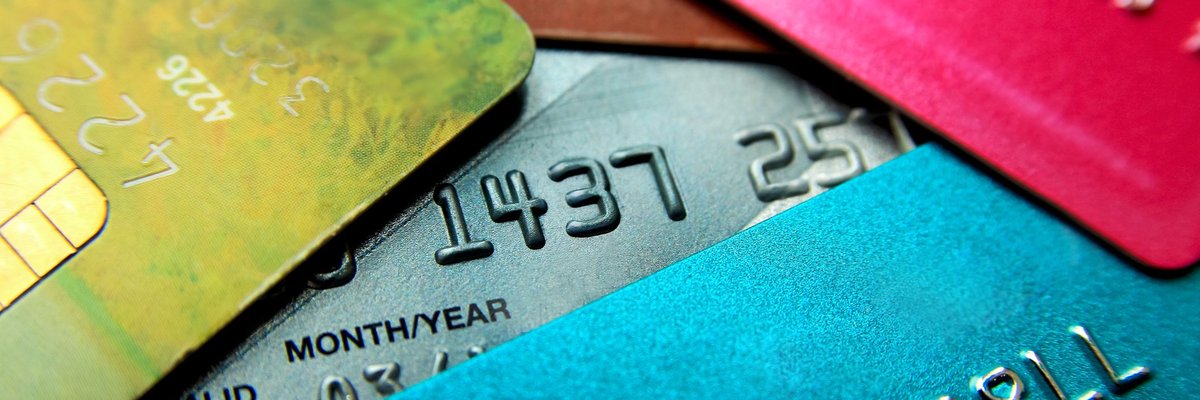How to Properly Disinfect Your Credit Cards
Your credit cards are likely home to a host of nasty microbes -- but you can fight back.
In the early days of the COVID-19 pandemic, before we knew much about how it spread, cautious consumers were sanitizing everything that came into their homes, from Amazon boxes to cans of vegetables. While we've since learned that the likelihood of catching COVID-19 from your groceries is low, some everyday items may still be worth a wipe-down -- including your credit cards.
Consider this everyday scenario: You hand your card to a waiter to pay for your meal, they hand it back, and you slide the card back into your wallet. A minute later, you rub an itchy eyelid and welcome aboard every nasty little microbe that was using your credit card as a lifeboat.
Viruses and bacteria can live on your cards for days
Even before the pandemic hit, studies found that cash and credit cards were ripe with germs, and experts have recommended for years that we all take the time to clean our credit and debit cards. In pandemic times, it's more important than ever to ensure your cards aren't hazardous to your (or your family's) health.
According to Harvard Health, the coronavirus can live on plastic and stainless steel for up to three days, and the CDC advises that frequently touched objects and surfaces should be cleaned and sanitized at least once a day. In addition to copious handwashing, cleaning your frequently used items can help keep your home germ-free.
Use noncorrosive cleaners and disinfectants
While the majority of credit cards are still made of plastic, many cards are now also coated in metal alloys. All of these materials can be sensitive to corrosive cleaners, so it's a good idea to make sure you're not killing your credit card along with its microbial stowaways.
To safely clean your credit cards, regardless of material, you'll want to use a clean, soft cloth (like microfiber) and isopropyl alcohol. Perform an initial wipe-down with a damp cloth -- this will get rid of any surface debris -- then go back over it with the alcohol. You can also use a cotton swab dipped in alcohol to get into the nooks and crannies around raised letters or logos.
Although you'll want to use a little pressure while cleaning, avoid vigorously scrubbing the embedded chip or the magnetic strip, as this could potentially damage the usability of your card. Let your credit cards dry completely before placing them back in your wallet.
Blast microbes with UV light
If dealing with soaps and disinfectants isn't your bag, you can go the high-tech route with a special UV sanitizing light. In use for decades, UV light -- short for ultraviolet light, which includes wavelengths between 400 and 10 nanometers -- is made up of high-energy photons that damage the genetic material of bacteria and viruses, rendering them inert.
While commercial UV lights are typically large (and expensive) and made to cover wide areas, consumer UV-based sterilization products come in a variety of shapes and sizes, from handheld wands to box-like cases designed to sanitize cell phones.
It's vital to remember that UV light isn't just hazardous to microbes -- it's also hazardous to humans. UV radiation can cause eye damage, sunburn, and skin aging. And exposure to UV radiation is also associated with skin cancer. Be careful to only use UV devices as directed and never use them on your skin or face.
Minimize outside germs with contactless payments
In addition to frequent handwashing and regularly disinfecting your credit cards, you can minimize your risk of contaminated credit cards by taking advantage of touch-free payment options, including contactless credit cards and mobile wallets.
Most major credit card issuers now provide contactless-enabled cards -- typically signified by a wave-like symbol similar to that used for Wi-Fi signals. Contactless cards use near field communication (a type of data transfer over short distances that's also called NFC) to move information to and from the credit card reader without inserting or swiping your card.
Mobile wallets, such as Google Pay or Apple Pay, are also a touch-free option for making credit card purchases. While generally not as widely accepted as other payment methods, an increasing number of retailers will let you use many of the more popular mobile wallet apps.
A clean card is a safe card
With the pandemic still raging and flu season upon us, ensuring we're all practicing good hygiene has become more important than ever. Along with handwashing and mask wearing, regularly disinfecting your cards -- and other everyday objects -- can be a valuable part of your overall strategy to keep your home safe from viruses and bacteria.
Our Research Expert
We're firm believers in the Golden Rule, which is why editorial opinions are ours alone and have not been previously reviewed, approved, or endorsed by included advertisers. Motley Fool Money does not cover all offers on the market. Motley Fool Money is 100% owned and operated by The Motley Fool. Our knowledgeable team of personal finance editors and analysts are employed by The Motley Fool and held to the same set of publishing standards and editorial integrity while maintaining professional separation from the analysts and editors on other Motley Fool brands. Terms may apply to offers listed on this page.



